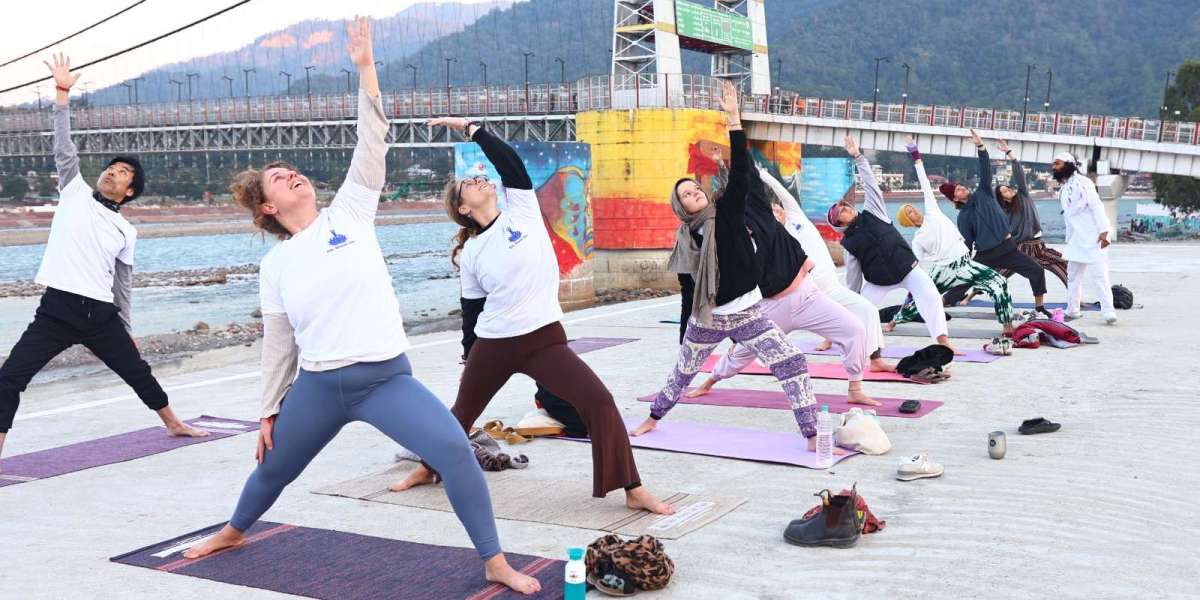In the fast-paced world we live in today, many of us are constantly on the go, juggling work, personal commitments, and everything in between. As a result, finding time for deep relaxation and self-care has become more important than ever. One practice that has gained significant attention for its ability to provide profound relaxation and healing is Yin Yoga. In this blog, we will explore the transformative benefits of Yin & Yoga how this unique style of yoga works, and why it’s worth incorporating into your wellness routine.
What is Yin Yoga?
Yin Yoga is a slow-paced, meditative form of yoga that focuses on holding passive postures for an extended period, typically 3 to 5 minutes, or even longer. Unlike more dynamic styles of yoga, such as Vinyasa or Ashtanga, which emphasize active movement and flowing sequences, Yin & Yoga is all about stillness, deep stretching, and connecting to the body’s deeper layers.
The term “yin” comes from the ancient Chinese philosophy of yin and yang, where yin represents the passive, receptive, and cooling aspects of life, while yang represents the active, dynamic, and heating aspects. In Yin Yoga, the goal is to balance the intense activity of daily life (yang) with the calm, quiet, and restorative qualities of yin.
The Philosophy Behind Yin & Yoga
The primary focus of Yin & Yoga is to target the deep connective tissues of the body, including the fascia, ligaments, and tendons. These tissues are often neglected in more active forms of yoga and physical exercise. By holding poses for an extended period, Yin Yoga encourages the body to relax and release tension, allowing energy to flow more freely through the body.
In addition to the physical benefits, Yin Yoga also aims to help individuals tap into their mental and emotional states. The long-held postures offer a unique opportunity to practice mindfulness, cultivating awareness of how emotions and thoughts arise and dissipate in the mind. This can lead to deep emotional release and healing.
How Yin Yoga Works
Yin Yoga is a practice of stillness and surrender, which is why it can sometimes feel challenging, especially for those who are used to more vigorous or fast-paced yoga styles. It is not about forcing the body into a posture but rather allowing the body to soften into the shape over time.
Here’s how Yin Yoga works on both a physical and energetic level:
Deep Stretching and Joint Mobilization: By holding poses for a prolonged time, the connective tissues in the body are gently stretched and stimulated. This helps increase flexibility and range of motion, especially in areas that are often stiff, such as the hips, lower back, and thighs.
Stimulating the Meridians: Yin Yoga is often linked to traditional Chinese medicine, where it is believed that energy (Qi) flows through the body along specific channels called meridians. By targeting specific areas of the body, Yin Yoga helps release blockages in these meridians and promotes the free flow of energy throughout the body.
Relaxing the Nervous System: Holding postures in stillness helps activate the parasympathetic nervous system, which is responsible for the body's "rest and digest" functions. This promotes relaxation, reduces stress, and encourages a sense of calm.
Mindfulness and Meditation: While in each pose, practitioners are encouraged to be present and mindful of their body sensations, thoughts, and emotions. This meditative aspect of Yin Yoga allows individuals to cultivate greater self-awareness and emotional resilience.
The Benefits of Yin & Yoga
The practice of Yin & Yoga offers a wide range of physical, mental, and emotional benefits, making it an ideal complement to more active forms of exercise. Here are just a few of the key benefits:
Increased Flexibility: By working with the deep connective tissues, Yin Yoga helps increase flexibility and mobility in the joints, making it easier to perform other physical activities and reduce the risk of injury.
Improved Joint Health: Yin Yoga targets the fascia, ligaments, and tendons, helping to maintain or improve joint health by promoting healthy blood flow and nutrient exchange in the tissues.
Stress Reduction: The slow, deliberate nature of Yin Yoga helps to activate the parasympathetic nervous system, inducing a deep state of relaxation. Regular practice can lower cortisol levels (the stress hormone) and improve overall mental health.
Emotional Release: The long-held postures provide an opportunity for emotional release. As you stay in each pose, you may notice physical or emotional sensations arise. Yin Yoga encourages the acceptance of these feelings, allowing them to be processed and released.
Mind-Body Connection: Yin Yoga offers an opportunity to cultivate mindfulness, encouraging you to connect more deeply with your body and inner self. It fosters a deep sense of awareness and presence.
Who Can Benefit from Yin & Yoga?
Yin Yoga is accessible to people of all ages and fitness levels, making it a wonderful practice for beginners and seasoned yogis alike. It's particularly beneficial for individuals who:
Lead active lifestyles and want to complement their yang-oriented workouts (like running, cycling, or weightlifting) with more restorative practices.
Experience chronic tension or stiffness, especially in areas like the hips, lower back, and shoulders.
Are looking to reduce stress and anxiety and cultivate greater mental clarity.
Seek emotional healing or greater self-awareness.
Need a restorative practice due to injury or physical limitations.
How to Incorporate Yin Yoga into Your Routine
Incorporating Yin & Yoga into your routine can be a deeply rewarding experience. Here are some tips to get started:
Start Slow: If you’re new to Yin Yoga, begin with just one or two sessions per week. As you become more comfortable with the practice, you can gradually increase your sessions.
Listen to Your Body: The beauty of Yin Yoga lies in its focus on tuning into the body’s sensations. Don’t force yourself into a deep stretch. Instead, find a position where you feel a gentle stretch and hold it without straining.
Focus on Breathing: Use deep, slow breaths to help you relax into each posture. Inhale deeply to expand your chest and exhale to release tension in the body.
Use Props: Props like blocks, bolsters, and blankets can help you find comfort in each pose and support your body while you relax into the stretch.
Practice Consistently: Like any yoga practice, the more regularly you practice Yin Yoga, the more you will reap its benefits. Aim for consistency rather than intensity.







